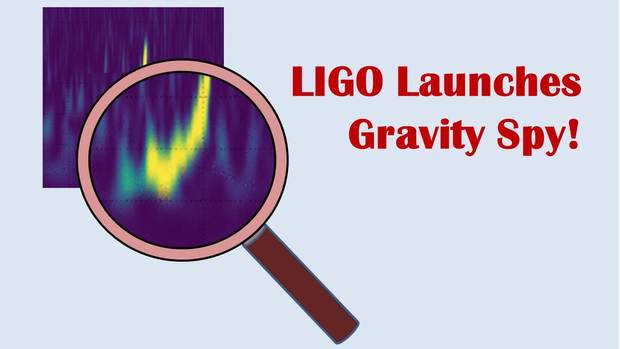
LIGO Launches "Gravity Spy" Citizen Science Program
News Release • October 18, 2016
LIGO invites everyone to help improve its search for gravitational waves!
LIGO's newest Citizen Science Program, Gravity Spy, will enable anyone around the world to help LIGO scientists and LIGO computers become better and faster at finding the telltale traces of gravitational waves.
As a "Gravity Spy" participant, you will look at real LIGO data in search of 'glitches', unwanted hiccups in the signal that can sometimes be confused for or mask out gravitational waves. Glitches make finding the real thing even more difficult than it already is! Nevertheless, they are an unfortunate fact of life for LIGO, so identifying the different kinds of glitches that appear in the interferometer data is crucial for LIGO scientists to be able to distinguish between annoying blips and signals from space!
If you want to help LIGO continue to make scientific history, then Gravity Spy is the Citizen Science program for you! Click, SIGN ME UP FOR GRAVITY SPY! to get started today!
If you still want a little more information, here's what the creators of Gravity Spy say about this exciting opportunity:
"LIGO is the most sensitive and complicated gravitational experiment ever built. To detect gravitational waves even from the strongest events in the Universe, LIGO needs to be able to know when the length of its 4-kilometer arms change by a distance 10,000 times smaller than the diameter of a proton! This makes LIGO susceptible to a great deal of instrumental and environmental sources of noise. Of particular concern are transient, poorly modeled artifacts known by the LIGO community as glitches. Though the reason for having two detectors separated by thousands of miles is to isolate the detectors from common sources of noise, glitches happen frequently enough that they often can be coincident in the two detectors and can mimic astrophysical signals. Classifying and characterizing glitches is imperative in the effort to target and eliminate these artifacts, paving the way for more astrophysical signals to be detected.
"Classifying glitches using computers has proven to be an exceedingly difficult task. A family of data analysis algorithms known as machine learning have made huge strides over the past decade in classification problems, though they usually require a large pre-classified dataset to operate effectively. However, human intuition has proven time and time again to be a useful tool in pattern recognition problems such as this. One of the innovations of this citizen science project is that citizen scientists and computer algorithms will work in a symbiotic relationship, helping one another to optimally classify and characterize glitches. The general workflow will be:
- Citizen scientists will sift through the enormous amount of LIGO data to produce a robust "gold standard" glitch dataset that can be used to seed and train machine learning algorithms
- Machine learning algorithms will learn from this classified dataset to sort through more LIGO data, and choose the most interesting, abnormal glitches to be sent back to the citizen scientists
- Citizen scientists will further classify and characterize these glitch morphologies, determining new glitch categories to be used in the training of the machine learning algorithms
Utilizing the strengths of both humans and computers, this project will keep LIGO data as clean as possible, and help to unlock more of the gravitational wave universe."




